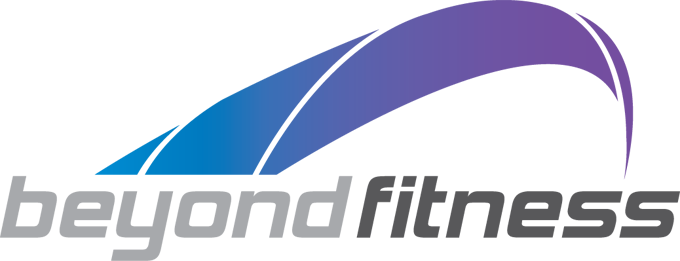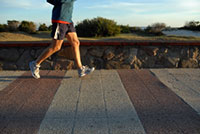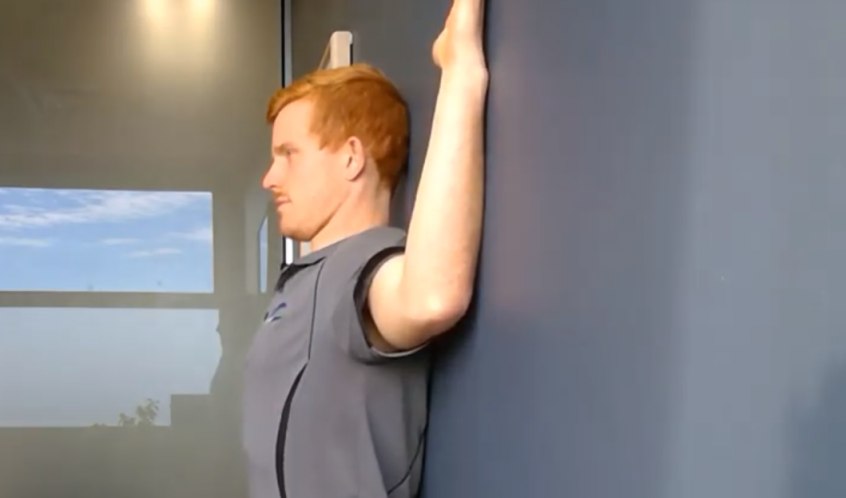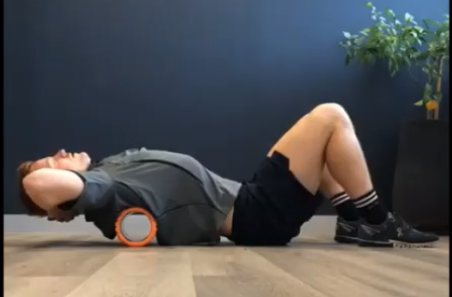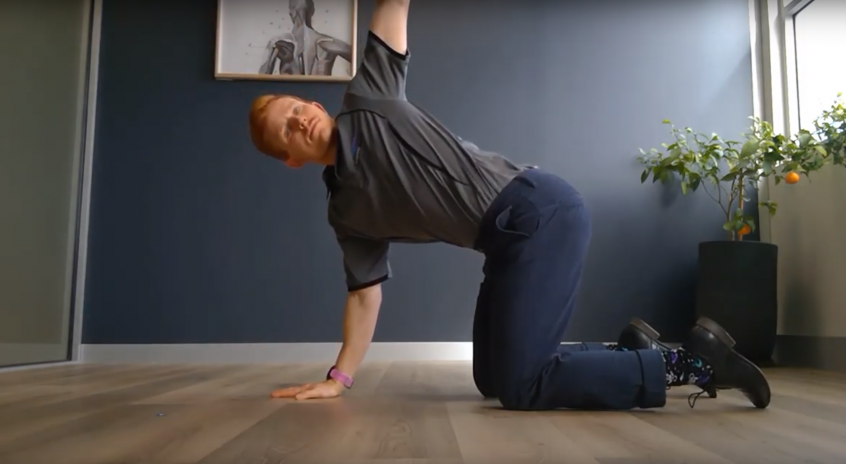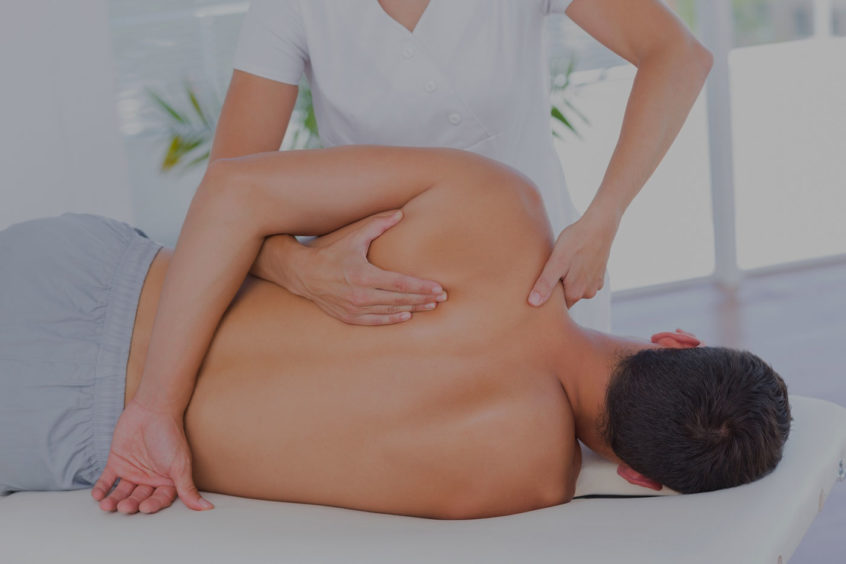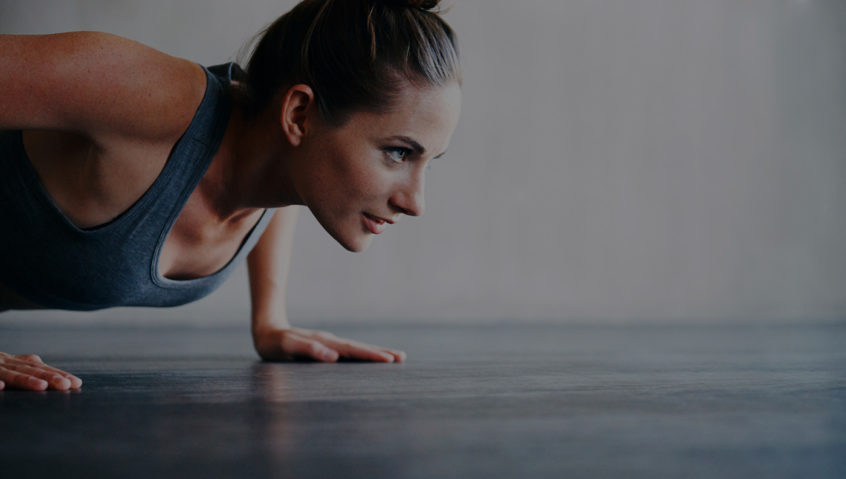Osteopath Jamey Pemmelaar providing you with his third exercise to help reduce lower back pain and decrease stiffness. !Lower back pain is one of the most common complaints I’ve recieved as both an osteopath and personal trainer. It can restrict your exercise capacity, give you trouble sleeping and even inhibit your ability to live the lifestyle you want. It’s therefore important to get ontop of it as soon as possible to ensure a speedy recovery! The exercise shown is a great way to promote movement through your lower back therefore helping to increase mobility. So if your back is feeling tight before/after/during a workout (or any other time really), I’d suggest giving this movement a go. It’s important to maintain control of the movement so I’d suggest counting to 2 to lower your legs and return them to the starting position. Key points to remember!1. Keep your knees together and both … Read More
Exercise 2 – Reduce Lower Back Pain
Osteopath Jamey Pemmelaar providing you with his second of three exercises to help reduce lower back pain and decrease stiffness. !Lower back pain is one of the most common complaints I’ve recieved as both an osteopath and personal trainer. It can restrict your exercise capacity, give you trouble sleeping and even inhibit your ability to live the lifestyle you want. It’s therefore important to get ontop of it as soon as possible to ensure a speedy recovery! These two stretches shown are simple ways to limber up your low back. They can help increase your range of motion whilst helping to reduce pain, who wouldn’t want to give them a try? It’s important to note that you shouldn’t force the stretch too far as this may cause injury and that’s not what we are after. Key points to remember!1. Hold each stretch for 30 seconds: I find taking a few … Read More
Exercise 1 – Reduce Lower Back Pain
Osteopath Jamey Pemmelaar providing you with his first of three exercises to help reduce lower back pain. ! Lower back pain is one of the most common complaints I’ve recieved as both an osteopath and personal trainer. It can restrict your exercise capacity, give you trouble sleeping and even inhibit your ability to live the lifestyle you want. It’s therefore important to get ontop of it as soon as possible to ensure a speedy recovery ! The exercise shown is a nice and simple exercise done in the standing position and is especially good for individuals who find getting up and down off the ground painful. It aims to decrease lower back tightness and subsequent pain, we hope it helps! Key points to remember!1. Stand tall; start standing tall and try not to let your shoulders fall forward while moving2. Move slowly; count to 2 on the way down to … Read More
The I’m Basically running program
How to get from 0 – 5 kms in 10 weeks Hello team, It’s Jamey here from Beyond fitness with my thoughts on the best way to return running from a substantial break or start running for the first time in your life. It all started 3 years ago when I decided to challenge myself in a different area and signed myself up for a half marathon. I’d never been big on running before this point but completing a half marathon had always been something I’d wanted to do. Fast forward to the present and I’ve completed my fair share of run events since which are listed below: Event and distance Time Average pace Run for the kids 2016, 16kms 1hr, 20mins and 59secs 05:03 min/km Run Melbourne 2016, ½ marathon 1hr, 35mins and 27secs 04:32 min/km Run Melbourne 2017, ½ marathon 1hr, 30mins and 17secs 04:16 min/km Run Melbourne … Read More
Postural Break
There is no better medicine for long periods of sitting than breaking up said periods of sitting by standing up and moving around. These exercises, coupled with a short 2-5 minute walk, I’ve found to be the most effective at helping break up periods of sitting as you can do them anywhere, anytime. Below there are two exercises for you. Tips for this standing exercise:– Start with your feet approx 10 cm away from the wall, lean back and have your hips, back and head in contact with the wall– Lift your elbows up to 90 degrees, bend your hands up to 90 degrees keeping both elbows and wrists pressed against the wall (Some may not be able to hold this position, that’s fine just press your elbows and wrists back towards the wall)– Hold this position for 5-10 deep breathes and repeat 2-3 times. Some tips for this seated exercise:– … Read More
Upper Back Extension Over a Foam Roller or Rolled Up Towel
This exercise is great for helping to reverse the posture we all commonly fall into during long periods of sitting. We all know the one, shoulder and head dropping forward while we slouch over the desk pounding through some work. Using this exercise will help free up some movement in the upper back whilst helping to decrease pain and tension across the area! Tips:- Hold for 30s in 3-4 different spots in the upper back area Make sure you drop down slowly and take nice slow, steady breaths while in position Keep your hips on the ground and don’t push into discomfort (stay below a 2-3/10)
Upper back rotations
During long periods of sitting we tend to remain in the same position for extend periods of time, this exercise is great for promoting movement through your upper back. The following two videos will show you two ways to increase movement in your upper back. I prefer to perform the first exercise starting from my hands and knees but after watching them both, see which one you prefer. Tips for hands/knees version:1. Start with your hands under your shoulders and knees under your hips. 2. Lift one hand off the ground raising it to the roof. 3. Then thread it through past your elbow to the other side of the body. 4. Repeat 10-15 times both sides. Doing 2-3 sets each side! Tips for supine (lying down) version:1. Start laying on your side, knees bent/together and hands out straight2. Start the movement by rotating through your upper back lift your top hand off … Read More
Sore shoulders from weight training?
Try using these release techniques and exercises to help increase strength and mobility through your shoulders. I’ve had my share of shoulder niggles as have many people I’ve trained and treated. I’ve come to see a pattern within the active community and that is it’s generally caused from an increase in resistance training. These are some exercises and release techniques I’ve found help increase shoulder stability and strength while also working to decrease my shoulder pain. I hope they can help you become shoulder pain free!! Infraspinatus spikey ball release: Whilst this can be mildly painful, I find this an awesome little spot to release to help free up shoulder mobility. Other spots can also be used, to see those, please see my total shoulder release post and accompanying video. Please note this will be quite hard to explain but I’ll do my best! 1. Start by lying on your … Read More
Wrist pain from exercise?
Do you suffer from wrist pain or discomfort while doing push ups? I’ve had a rapid increase in the number of patients coming in for treatment regarding wrist pain resulting from circuit type training. That got me thinking about developing a strategy to help prevent wrist pain from occurring because after all the best form of rehabilitation is a good serve of pre-habilitation. So here are my best three tips to help decrease the likelihood of wrist pain plus two actions to take if your starting to develop wrist pain as a result of exercise. Tip 1: Ensure correct technique When we load your wrist/hands into ‘flexion’, think hands in push up position, it essential we share the load throughout the hand rather than loading to one side. I commonly see people loading more to the outside of their hand (little finger side) than compared to the inside. Another technique … Read More
Fundamentals of progressive overload
What is progressive overload? Progressive overload is known as a gradual increase in stress being applied to the body during exercise. This occurs via small increases to one of the following factors; volume (weight/length of training), frequency (how often the training is performed) and intensity (how hard the training is). This put into real person talk is small increases in training allowing your body to adapt to the stress allowing improvements in the particular sport. When to apply? Most people think of progressive overload as a weight training principle however it can and should be applied to all areas of exercise, especially those in which you’re looking to improve on. It should be noted that progressive overload won’t happen in a straight line for example beginners are more likely to see rapid improvements when compared to an advanced counterpart therefore listen to your body when applying it. How much load … Read More
